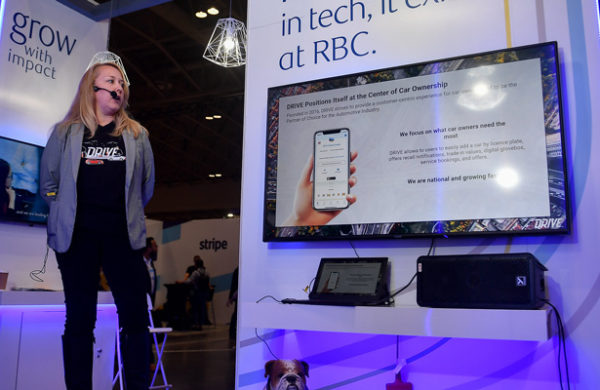
For those new to computers, the world around them can be very confusing. These terms will help people get acquainted with computers and the Internet.
A
Application is a term for a program installed and used on a computer system. Examples are: Web Browsers, word processors, and chat programs. Windows file extension is .exe. Macs use the .app extension.
Applet this is a java application embedded into a website. The applet cannot use resources from the local machine.
B
BIOS stands for “Basic Input Output System.” This program is found on all Windows based machines, and is used to start the computer up. BIOS is not used in Mac systems.
BCC means “blind carbon copy.” When sending an email to more than one person, the addresses in the BCC box will not be shown to all recipients. If the address are provided in the CC field, all the addresses are visible.
C
Cache pronounced “cash,” this serves as a storage of short term information in use by the computer. There are memory caches, Internet caches, and other types of caches all used to store this data.
Codec is short for “encoder-decoder.” Different video and audio formats have different compression ratios so codecs are necessary to ensure these files play on the computer.
D
DOS means disc operating system. It was the first operating system used by IBM computers. Two different forms of DOS were sold, PC-DOS, and MS-DOS. MS-DOS is the one Microsoft bought rights to.
De-fragment is a process that reorganizes the hard drive to help it run more efficiently.
E
Ethernet is a form of connectivity that appears like a slightly larger telephone jack. It is used to connect one computer to another, connect to a local area network, or connect to high speed Internet modems.
Emoticon(s) are text based smiley faces and other objects used in chat and email to express emotion. Examples are 🙂 for happy, and :'( for crying.
F
Firewire is a form of connectivity similar to USB, meant to connect peripherals such as MP3 Players and digital cameras to the computer. It operates around 30 times faster than a USB 1.1 connection.
FSB is an acronym for front side bus. It is sometimes referred to as the “system bus.” The FSB is what connects the RAM and other important computer components to the motherboard.
G
Gateway is a piece of equipment meant to connect two or more computers to the Internet or another network.
Gigabyte is a unit of storage space equal to 1,073,741,824 bytes or 1024 megabytes. It is better estimated to be 1 billion bytes, or 1000 megabytes. It is the unit of measurement before the terabyte.
H
Heatsink a piece of equipment that takes heat away from the processor to prevent it from overheating and malfunctioning.
Hexadecimal is a number system using a 16 base. It is used to name colors displayed on monitors.
I
IM is short for instant message. An instant message is a form of communication between two Internet users. There are several IM services, free of charge, such as AOL Instant Messenger and Yahoo Instant Messenger.
ISO is short for “International Organization for Standardization.” It is used by CD-ROM media to copy the contents of the disc into a smaller file that can burn exact copies of that disc.
J
Java is a programming language developed and used by Sun Microsystems.
Jumper is a metal connector on the motherboard acting as an on/off switch and to change hardware configurations.
K
Kerning is a term used to describe the space between characters in a font. This will vary from front to font, and is important for readability.
Keylogger is a program that tracks all keystrokes made on a computer. It can be used for parental security or hacker malice.
L
LAN is a term for “Local Area Network.” Pronounce it as “land” without the d to avoid sounding strange to computer savvy people. It is a computer network limited to a close geographical area, such as a residence or small office.
Lossy is a term used for types of file compression that take away from data and quality of the original file. Many different file formats are lossy, such as JPEG and MP3’s.
M
Motherboard is the main computer component that everything used in the computer connects to.
Memory Stick is a type of flash memory created by Sony used to store information for a variety of accessories such as digital cameras and cell phones.
N
Netiquette is a term derived from the words “Internet” and “etiquette.” It serves to describe the manners and appropriate actions to take while using the Internet, such as not writing with cap locks, as this signifies yelling.
Newsgroup is a term used to describe an online based group used to describe particular issue or topic.
O
Open Source is software that has publicly available source code that can be changed or adapted. The software is free to everyone.
Overclocking a technique used to speed the processor faster than it is intended to run. This can shorten the life of the equipment or burn it out completely if not done correctly and monitored.
P
PCI Express is an updated version of the PCI connectivity port used to connect devices to a motherboard.
Podcast is a term derived from iPod and broadcast. These are audio files that can be downloaded and listened to on any computer or MP3 player.
Q
QWERTY is the term used to describe the latin keyboard. The name comes from the first six letters across the top row of letters on the keyboard. This format was originally introduced to aid in the reduction of jamming in typewriters.
R
RAID stands for “Redundant Array of Independent Disks.” RAID is used for storing information across multiple hard drives.
RAM is a term for random access memory. It resides on the motherboard and serves to assist the computer with opening and running programs faster than loading them from the hard drive itself.
S
SATA is short for “serial-ATA” which means “serial advanced technology attachment.” It is a form of connectivity for hardware devices connecting to the motherboard. Pronunciation varies as some make it rhyme with data, some say serial and state the letters A-T-A, and others say all of the letters.
Social Networking is an phenomenon that has recently taken over the web, allowing more connectivity and interaction between web users. Several websites, such as Facebook and MySpace are “virtual communities.”
T
Task Bar is the bar at the bottom of the screen in Windows versions 95 and above that shows open programs, the system tray, and the time and date.
Terabyte is a unit of storage measurement equal to 1024 gigabytes.
U
UDP stands for User Datagram Protocol. It is used by streaming media because it does not track packets of data being sent or received from the server. It is known as a “stateless” protocol.
USB stands for Universal Serial Bus. It is now the most common port for connectivity in computers today. Many different accessories and peripherals connect to a PC through USB.
V
Vector graphic is an image made of paths rather than pixels dots–which allows them to retain the same quality and resolution regardless of size.
VGA is a term that means “video graphics array.” It is the standard display for most PCs.
W
Web 2.0 is a term to reflect the new generation of web use that includes the interactivity presented by social networking and other trends. The term came into use in 2004.
Wi-Fi is a short term meaning “wireless fidelity.” The term refers to the wireless networking equipment used to connect to the Internet and other devices.
X
XHTML serves as an abbreviation for “Extensible Hypertext Markup Language.” It is an expansion of HTML. As such, XHTML 1.0 is commonly known as HTML 5.0.
XML is an acronym for “Extensible Markup Language.” It is a metalanguage that can be used to create markup languages for various applications or in HTML documents.
Y
Yahoo! Is an Internet website and search engine that competes with the Google giant. It is one of the best known services and serves as a “portal” because it links to so many other websites.
Z
ZIP is a file type for compressed files. Just about any file can be added to a zip file and compressed to a smaller file size for emailing or sharing. The file extension is .ZIP.
ZIF is an acronym for “Zero Insertion Force.” It is a type of CPU socket allowing for replacement or upgrade of the processor on the motherboard. Sharpened offers a glossary of computer and Internet terms. iwebtool provides an extensive computer glossary. Directron provides meanings of several different computer terms. Saugus offers definitions for many popular computer terms. What Is Tech shares definitions of some of the most popular computer and technology terms.
Meeting Tomorrow allows organizations and businesses nationwide to rent laptops, computers, projectors and screens, PA/sound equipment, microphones and more. We seek to make audiovisual technology accessible and easy to use for everyone.


